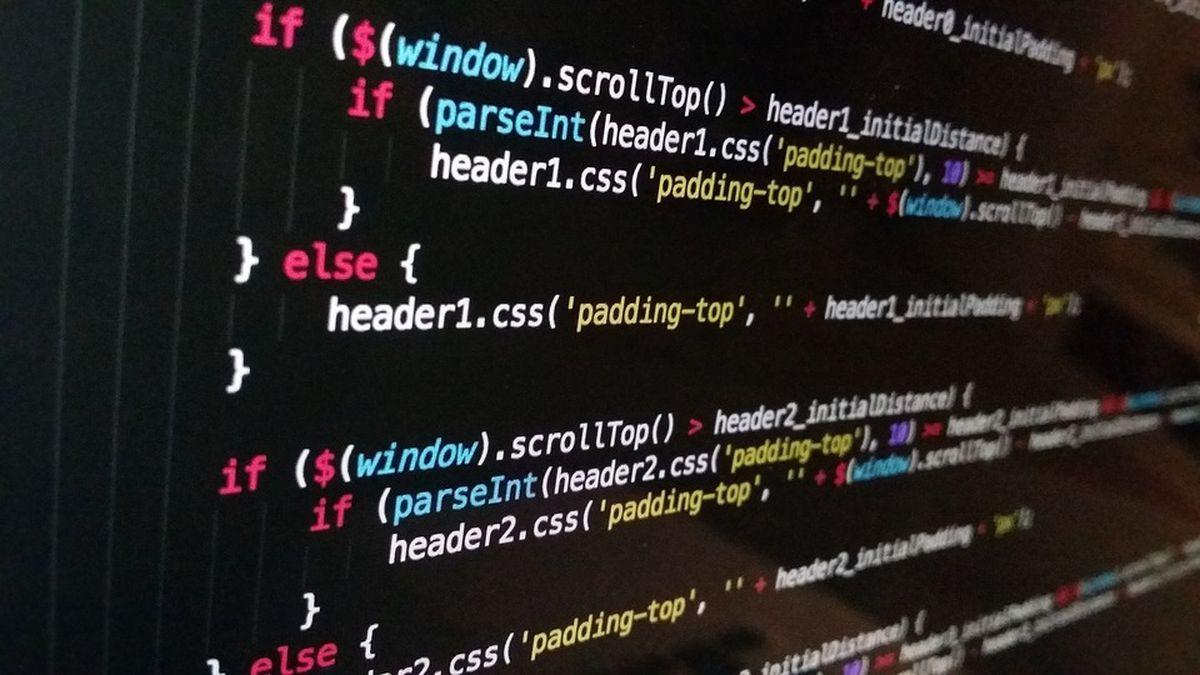Vibe Coding: Revolutionizing Software Development with AI-Assisted Programming
4 Sources
4 Sources
[1]
Why AI isn't replacing engineers -- it's making them more creative
A quarter of Y Combinator's 2025 startups reportedly use AI to write 95% of their code. That stat raises the question: are we headed for fewer coders, or just a different kind of coding? The real shift isn't about headcount. It's about how the role of the engineer is evolving. Engineers are moving from code execution to code orchestration. At the center of this shift is vibe coding, an approach where engineers express intent and AI handles the syntax, enabling smarter, faster systems built through collaboration, not keystrokes. At its core, vibe coding is an AI-first methodology that reimagines data engineering as a conversation between humans and machines. Instead of coding every instruction manually, engineers describe what they want to accomplish in natural language. AI interprets these instructions, translates them into code and assembles workflows that achieve the desired outcomes. What makes vibe coding distinctive is its collaborative dynamic. Engineers can partner with AI tools to solve problems, strategize and iterate faster than what was possible with traditional coding. It's a creative, intention-driven approach where the engineer's role goes from "executor" to "strategic orchestrator." For decades, data engineering was defined by meticulous coding, fragile pipelines and the slow, hands-on maintenance of data systems. In a vibe coding paradigm, the role of the data engineer shifts dramatically. Engineers become system designers: defining objectives, parameters and constraints. They work more like architects, setting the vision and structure, while AI agents translate that vision into code. This transition expands the creative scope of the engineer's work. Instead of spending cycles on repetitive tasks or debugging code, engineers can focus on building systems that are resilient, adaptable and aligned with evolving business needs. In practice, vibe coding is already reshaping how enterprises approach data. - Data integration: Instead of weeks spent manually rebuilding a pipeline for a new data source, engineers describe the integration goals. AI agents then generate the steps needed to ingest, clean, and normalize the data -- in hours, not weeks. - Identity resolution: Matching fragmented customer records across channels used to mean rigid, rule-based coding. Now, engineers provide direction, and AI models make probabilistic connections across emails, purchases, and browsing data -- forming unified profiles faster and with less friction. - Data governance and compliance: Engineers can ask AI to scan datasets for sensitive fields, automatically tagging PII. This builds compliance into the system from the outset, reducing risk without slowing down delivery. In all these cases, engineers remain in control, but they spend less time on syntax and more time solving problems. Although AI is writing more code, that code supports architectures that can evolve continuously without being rebuilt from scratch. While some routine coding tasks may become something AI can fully handle, the demand for engineers to frame the correct problems, direct collaborators and validate outputs will only increase. In this new landscape, the skillset for data engineers is evolving. Technical fluency remains essential, but so does the ability to collaborate with AI agents, understand system dynamics and ensure ethical, compliant and effective outcomes. Coding is becoming more abstract, but the creative and strategic understanding of engineering is growing in importance. Organizations looking to embrace vibe coding and AI-augmented engineering should start by laying the proper groundwork. 1. Clean metadata and documentation. AI agents need context. Invest in data hygiene so AI can interpret your intent reliably. 2. Training in AI oversight and prompt design. Engineers should know how to frame intent, validate AI-generated code, and refine outputs. 3. Cross-functional collaboration. Data, product, and marketing teams must align on goals. The clearer the objective, the more effective the outcome. The question isn't whether we'll need fewer coders, but whether coders are ready to step into a more strategic, creative role. As AI continues to mature, the organizations that succeed will be those that embrace this partnership model where humans and machines collaborate not just to produce more code, but to build systems that evolve, adapt and deliver value in real time. We list the best school coding platforms.
[2]
'Vibe coding' enables non-programmers to create functional applications
Vibe coding. It's a term that's bubbling around to describe a new wave of app creation. It means instead of writing code line by line, you build software by describing what you want in plain language -- and an AI agent generates the code for you. Put simply: You describe the vibe of the app, and the AI starts building it for you. This movement was popularized by Slovak-Canadian AI researcher Andrej Karpathy, who described English as "the hottest new programming language" in 2024. The idea has since taken off across platforms like Replit, Cursor, and GitHub Copilot, where AI turns lay language prompts like "create a to-do list with a calendar" into a working app. As a GP, I was intrigued. Could this be a way for people like me -- with lots of ideas but no coding background -- to build their own digital tools? It's so empowering As a non-coder, I used to see software development as the domain of Silicon Valley types hunched over glowing screens. But AI coding tools that allow people to code with plain language have lowered this barrier to entry. They do this in three key ways: This has been deeply satisfying for me. I'm not just using tech -- I'm shaping it to fit the way I think and work as a GP. No endless to-ing and fro-ing with coders to refine the design. So far, I've created apps for different corners of my life ranging from a tool that helps patients make a checklist before they visit a GP and another that allows GPs to compile and send health tips to their patient's phones, to a platform that will check if the GP's management plan fits with guidelines. While these help me professionally -- my other adventures in coding have included a to-do list that suits how I work, and an app that helps footy novices fake their way through weekend chats. Most of these were built in two or three days, by prompting and refining using Replit's AI agent. From passive consumer to digital creator One of the biggest surprises? Not being a coder is an advantage. In health care, we constantly refine workflows: the order of questions, how doctors navigate forms, finessing the style of information for patients. Unless you've worked as a GP, you can't anticipate these subtle issues. As a subject-matter expert, I can now build tools that are clinically useful -- without having to outsource or lose the subtle contextual and workflow issues. Sure, I don't fully understand the code under the hood. But by watching the AI's responses, I've picked up the lingo: "remove padding," "add home navigation button," "set up user database" and "add collapsible list." It's like learning a new language through immersion. And yes, things break. A lot. But debugging has become part of the fun -- it's problem-solving with a virtual assistant that never sleeps. Oddly enough, I find myself saying "please" and "thank you" to the AI agent. It seems to help. (Though I have no peer-reviewed evidence to support that.) There's something powerful about switching from passively downloading apps to designing your own. I've unsubscribed from several third-party tools because I've built versions that suit me better. It's also changed how I interact with tech. I now find myself analyzing the UX (user experience) of every app I touch -- whether I'm booking flights or wrangling a government portal. Once you've built your own, you start to notice what works and what doesn't. Even startups are shifting: a quarter of companies in Silicon Valley startup accelerator Y Combinator's latest batch generated 95% of their code via AI. These tools aren't just for hobbyists anymore -- they're becoming mainstream, even in new startup businesses. Ideas, patience and surprises Vibe coding isn't just a quirky trend -- it's part of a broader movement to democratize software development. If you've got ideas, content knowledge, or just curiosity -- it's absolutely worth giving it a try. The best part? You don't need to be fluent in software programs like Python or JavaScript. You just need to know what you want -- and have the patience to ask for it, again and again, until you iron out all the wrinkles on your new app. At this point, I've got a suite of my own home-made apps on my phone and they're getting more screen time than anything I've downloaded from the App Store. So go on, give it a crack. You might just surprise yourself.
[3]
The vibe coding hangover is upon us
Over the last couple of years, AI coding tools like Claude Code (Anthropic), Codex (OpenAI), Cursor, Lovable, and Replit have reached far beyond auto-completing lines of code; they can generate entire apps and features from a plain-language prompt, even for users with little or no coding experience. But even as enterprise execs hope the tools will speed up their software production, many in the development community are finding that while vibe coding may be great for slapping together demos, it's not so great for building secure, reliable, and explainable software. And the problems created by AI-generated code may only surface long after the software has shipped. "Code created by AI coding agents can become development hell," says Jack Zante Hays, a senior software engineer at PayPal who works on AI software development tools. He notes that while the tools can quickly spin up new features, they often generate technical debt, introducing bugs and maintenance burdens that must eventually be paid down with developer time and effort. That trade-off has some engineers questioning whether vibe coding tools ultimately cost more time than they save.
[4]
The rise of vibe coding: Democratizing engineering or just masking the gap?
This new dynamic is changing how companies think. Quick builds tighten feedback cycles. Teams release prototypes faster. The idea of a minimum viable product is shifting from being an engineering shortcut to a default strategy across roles. Vibe coders are becoming central to this workflow. This evolution is not just shaping software, it's reshaping the talent pipeline. Employers are rethinking job descriptions and skill assessments. Instead of asking for five years of experience in JavaScript, hiring managers are testing candidates on how well they design workflows with Replit or solve problems using AI-assisted tools. In some companies, product managers with no traditional dev background are now taking on technical ownership roles. This flexibility is blurring lines between departments -- and that's not a bad thing. It creates opportunities for more diverse problem-solvers to step in and lead. There's also a cultural shift in how people approach failure. Traditional software development often treats failure as expensive and time-consuming. Vibe coding, by contrast, treats fast failure as a feedback mechanism. Projects get scrapped and rebuilt quickly, and that learning cycle builds resilience. For younger builders growing up with this model, iteration is second nature. RETHINKING HOW WE TEACH, HIRE, AND BUILD We need to adapt. Education needs to balance AI tooling with old-school problem-solving. Teaching prompt design should go alongside basics like data structures and debugging. Some boot camps are beginning to explore how to blend traditional software skills with AI-powered development tools. Andela, Codecademy, and Coursera are joining in.
Share
Share
Copy Link
Vibe coding, an AI-powered approach to software development, is transforming the tech industry by enabling non-programmers to create functional applications and changing the role of traditional engineers.
The Rise of Vibe Coding
Vibe coding, a revolutionary approach to software development, is reshaping the tech industry by enabling non-programmers to create functional applications using AI-powered tools. This methodology, which gained popularity after Slovak-Canadian AI researcher Andrej Karpathy described English as "the hottest new programming language" in 2024, allows users to describe their desired application in plain language, with AI agents generating the corresponding code
2
.
Source: Tech Xplore
Transforming the Role of Engineers
As vibe coding gains traction, the role of traditional software engineers is evolving. Instead of writing code line by line, engineers are becoming strategic orchestrators, focusing on system design and problem-solving. This shift is exemplified by the concept of "code orchestration," where engineers express intent and AI handles the syntax .
Impact on Software Development Practices
Vibe coding is significantly impacting software development practices across various domains:
-
Data Integration: Engineers can now describe integration goals, with AI agents generating the necessary steps for ingesting, cleaning, and normalizing data in hours rather than weeks
1
. -
Identity Resolution: AI models can make probabilistic connections across various data points, forming unified customer profiles faster and with less friction
1
. -
Data Governance and Compliance: AI can automatically scan datasets for sensitive fields, tagging PII and building compliance into systems from the outset
1
.
Democratizing Software Development
Vibe coding is lowering the barrier to entry for software development, allowing non-programmers to create custom applications. This democratization is empowering professionals from various fields to build tools tailored to their specific needs. For instance, a general practitioner was able to create multiple healthcare-related apps in just a few days using Replit's AI agent
2
.
Source: Fast Company
Related Stories
Challenges and Concerns
Despite its potential, vibe coding faces several challenges:
-
Code Quality: AI-generated code may introduce technical debt, bugs, and maintenance burdens that surface long after the software has shipped
3
. -
Long-term Reliability: Some engineers question whether vibe coding tools ultimately cost more time than they save due to the need for extensive debugging and maintenance
3
. -
Skill Set Evolution: The rise of vibe coding necessitates a shift in the skillsets required for software development, emphasizing prompt design, AI oversight, and cross-functional collaboration
1
.

Source: TechRadar
Industry Adoption and Future Implications
The impact of vibe coding is already evident in the startup ecosystem, with a quarter of Y Combinator's 2025 startups reportedly using AI to write 95% of their code
1
. This trend is reshaping hiring practices, with employers focusing on candidates' ability to design workflows and solve problems using AI-assisted tools rather than traditional coding experience4
.As vibe coding continues to evolve, it's clear that the software development landscape is undergoing a significant transformation. While it offers exciting possibilities for innovation and democratization, it also presents challenges that the industry must address to ensure the long-term reliability and sustainability of AI-assisted software development.
References
Summarized by
Navi
[3]
Related Stories
Recent Highlights
1
Nvidia acquires AI chip startup Groq for $20 billion in largest deal ever
Technology

2
Chinese AI Models Close Gap With US Systems as Open-Source Strategy Reshapes Global Tech Order
Policy and Regulation

3
Samsung unveils Exynos 2600, world's first 2nm smartphone chip set to power Galaxy S26 series
Technology








